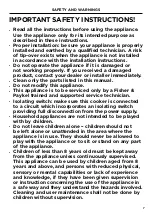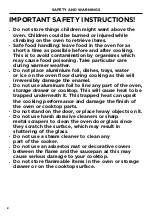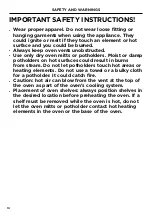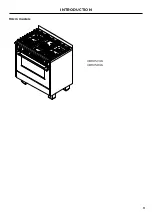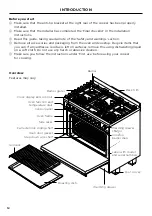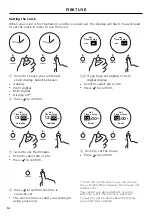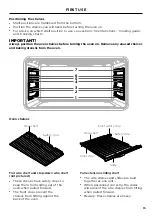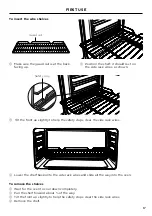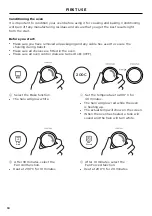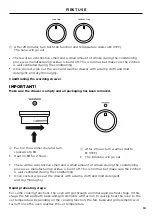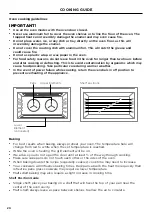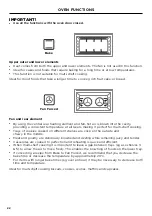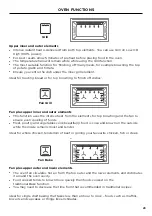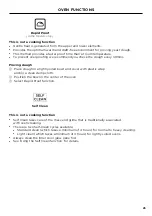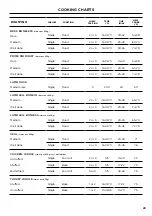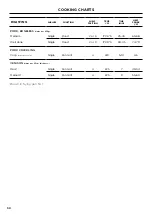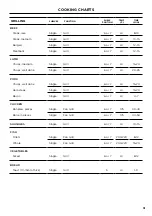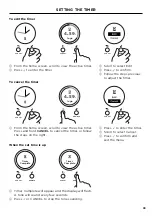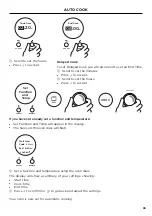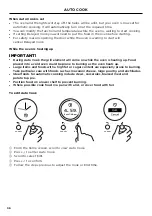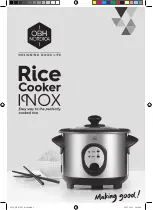
21
COOKING GUIDE
Oven cooking guidelines
Roasting
z
The Roast function is designed to brown the outside of the meat but still keep the inside
moist and juicy.
z
Boneless, rolled or stuffed roasts take longer than roasts containing bones.
z
Poultry should be well cooked with the juices running clear and an internal
temperature of 74°C.
z
If using a roasting bag, do not use the Roast function. The initial searing
stage is too hot for roasting bags. Use Fan Bake or Fan Forced and follow the
manufacturer’s instructions.
z
When using the Roast function, do not cover your roast, as this will stop the searing
process browning the outside of the meat. If you prefer to roast in a covered pan, use the
Fan Bake function instead and increase the temperature by 20°C.
z
Cook larger cuts of meat at a lower temperature for a longer time. The meat will
cook more evenly.
z
Always roast meat fat side up. That way, basting may not be required.
z
Always rest the meat for at least 10 minutes after roasting to allow the juices to settle.
z
Remember the meat will continue to cook for a few minutes after removing it from
the oven.
Shelf Position Guide
Place the meat on a shelf so that is is in the center of the oven or lower.
Grilling
z
This is a healthier alternative to frying.
z
Always grill with the oven door completely shut.
z
For best results allow 5 minutes of preheat before placing food in the oven.
z
If you use glass or ceramic pans, be sure they can withstand the high
temperatures of the grill.
z
To avoid piercing the meat and letting juices escape, use tongs or a spatula to turn the
meat halfway through cooking.
z
Brush meat with a little oil to help keep the meat moist during cooking. Alternatively
marinade the meat before grilling (but be aware that some marinades may burn easily).
z
Where possible grill cuts of meat of a similar thickness at the same time. This will
ensure even cooking.
z
Always keep a close watch on your food while grilling to avoid charring or burning.
Shelf Position Guide
z
For thinner cuts of meat, toasting or browning foods, use a higher shelf position.
z
Thicker cuts of meats should be grilled on lower shelves or at a lower grill setting to
ensure even cooking.
Reheating
z
Use Bake or Fan Bake to reheat food.
z
Bake and Fan Bake are particularly good for reheating pastry based items, as the base
heat will help re-crisp the pastry case.
z
Always reheat food to piping hot. This reduces the risk of contamination by harmful bacteria.
z
Once hot, set the oven temperature to WARM or use the warming drawer to keep food hot.
z
Never reheat food more than once.

